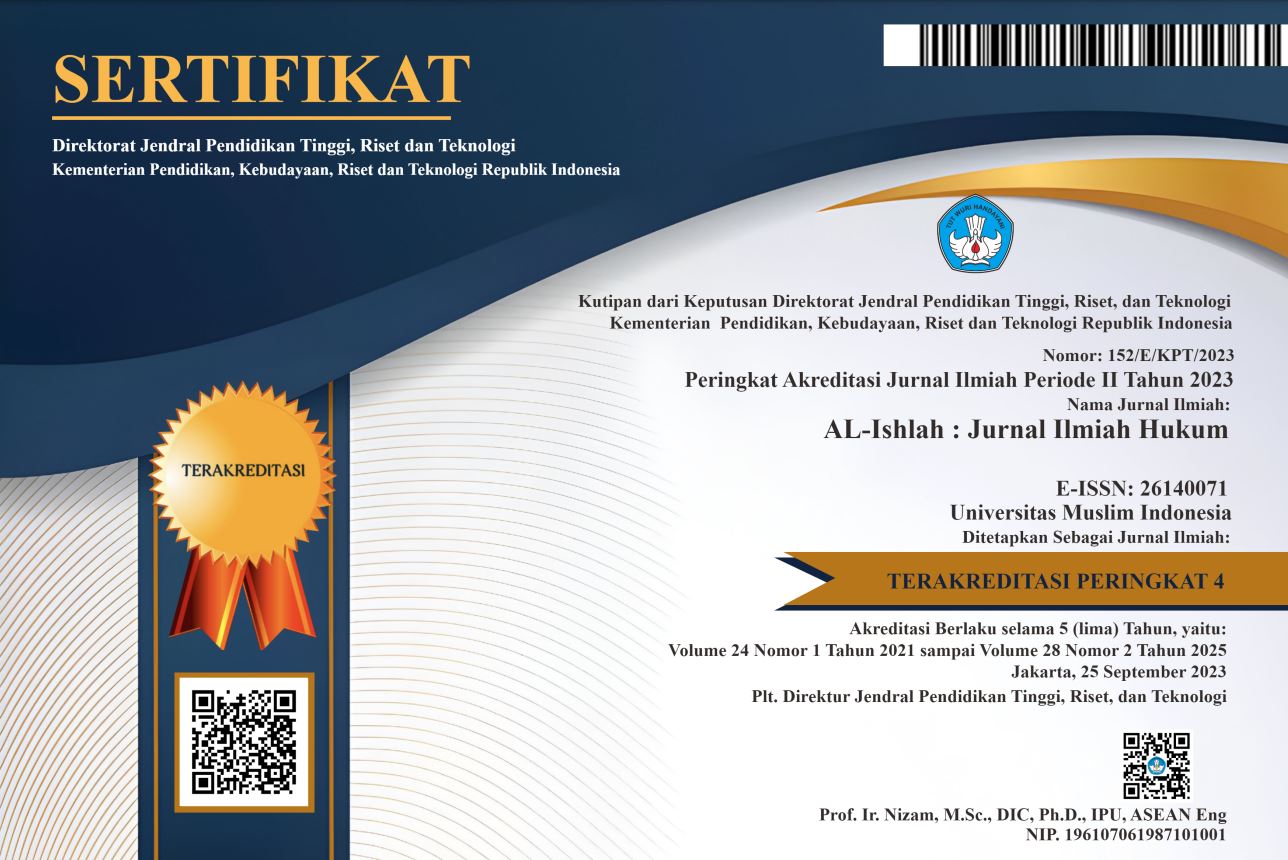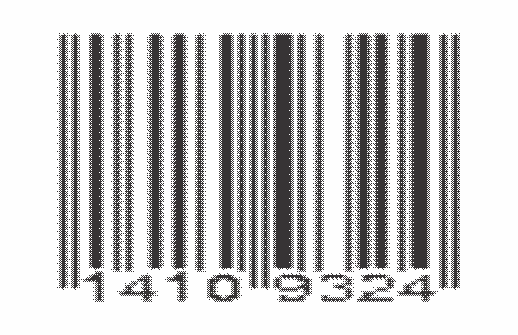Law Enforcement against Perpetrators of Child Grooming Sexual Abuse at the Tebing Tinggi Police Resort: An Islamic Criminal Law Perspective
Abstract
This study aims to identify cases of child grooming sexual abuse in Tebing Tinggi City, identify the types of sanctions that can be imposed on groomers from the perspective of Islamic criminal law, and examine the law enforcement efforts undertaken by the Tebing Tinggi Police Resort in handling these cases. This research employs a mixed-methods approach, combining field research and normative legal analysis. The collected data is then analyzed qualitatively to describe the issue and address the research objectives. The results show that child grooming cases at the Tebing Tinggi Police Resort fluctuated throughout 2019-2024, with a significant surge of 70 cases in 2023. The standard modus operandi involves establishing an emotional relationship and trust between the groomer and the victim, which the groomer then exploits to commit sexual abuse. From the perspective of Islamic criminal law, groomers can be subjected to hadd punishment if sexual intercourse occurs or ta’zir punishment if only sexual abuse without intercourse takes place. Simultaneously, the Tebing Tinggi Police Resort has carried out its law enforcement function both repressively, through the process of investigation, inquiry, and determination of suspects based on the provisions of Law Number 8 of 1981 and Law Number 23 of 2002, and preventively, through education and outreach programs. Therefore, it is recommended that the Tebing Tinggi Police Resort, the Tebing Tinggi City Government, community institutions, religious leaders, families, and parents enhance their efforts in preventing and handling child grooming comprehensively and continuously.
References
Acharya, M. (2023). Rights and Safeguarding of Children: A Qualitative Investigation in Arghakhanchi. Orchid Academia Siraha, 2(1), 42-52. https://doi.org/10.3126/oas.v2i1.65601
Al-Jauziyyah, I. Q. (2014). Buku Pintar Memutuskan Perkara: Dari Rumah Tangga, Peradilan, sampai Negara (Trans. by M. M. Anasy). Pustaka Al-Kautsar.
Ali, S., Haykal, H. A., & Youssef, E. Y. M. (2023). Child Sexual Abuse and the Internet—A Systematic Review. Human Arenas, 6(2), 404-421. https://doi.org/10.1007/s42087-021-00228-9
Alwafi, M. R., & Sulchan, A. (2023). Penegakan Hukum Perkara Tindak Pidana Pelecehan Seksual Terhadap Anak (Studi Kasus: Perkara Nomor: 540/Pid.B/2016/PN.Smg). Jurnal Ilmiah Sultan Agung, 2(1), 1-10. Retrieved from https://jurnal.unissula.ac.id/index.php/JIMU/article/view/31235
Antunes, M. J. L., & Manasse, M. (2022). Social Disorganization and Strain: Macro and Micro Implications for Youth Violence. Journal of Research in Crime and Delinquency, 59(1), 82-127. https://doi.org/10.1177/00224278211004667
Ath-Thabrani, I. (2015). Al Mu’jam Al Kabir (Trans. by M. Misbah & A. Murtadho). Pustaka Azzam.
Az-Zuhaili, W. (2011). Fiqih Islam Wa Adillatuhu (Trans. by A. H. Al-Kattani, et al., Volume 4). Gema Insani.
Borj, P. R., Raja, K., & Bours, P. (2023). Online Grooming Detection: A Comprehensive Survey of Child Exploitation in Chat Logs. Knowledge-Based Systems, 259, 1-21. https://doi.org/10.1016/j.knosys.2022.110039
Boumpa, V., Papatoukaki, A., Kourti, A., Mintzia, S., Panagouli, E., Bacopoulou, F., Psaltopoulou, T., Spiliopoulou, C., Tsolia, M., Sergentanis, T. N., & Tsitsika, A. (2024). Sexual Abuse and Post-Traumatic Stress Disorder in Childhood, Adolescence and Young Adulthood: A Systematic Review and Meta-Analysis. European Child & Adolescent Psychiatry, 33(6), 1653-1673. https://doi.org/10.1007/s00787-022-02015-5
Collings, S. J. (2020). Defining and Delimiting Grooming in Child Sexual Exploitation. Child Abuse Research in South Africa, 21(1), 1-9. https://hdl.handle.net/10520/EJC-1d473f7b39
Damanik, D., & Romzi, A. (2023). Distorted the Facts an Act of Sexual Harassment the Perspective of the Ulamas’ Interpretation (A New Approach and Direction in Understanding Facts). Jurnal Ushuluddin, 31(2), 241-266. https://doi.org/10.24014/jush.v31i2.19626
Firdaus, M. A., & Iwan, I. (2024). Custody Determination for a Child Born as a Result of Rape: A Maqashid al-Sharia Perspective. Al-Ishlah: Jurnal Ilmiah Hukum, 27(2), 406-426. https://doi.org/10.56087/aijih.v27i2.512
Gill, A. K., & Harrison, K. (2015). Child Grooming and Sexual Exploitation: Are South Asian Men the UK Media’s New Folk Devils? International Journal for Crime, Justice and Social Democracy, 4(2), 34-49. https://doi.org/10.5204/ijcjsd.v4i2.214
Government Regulation in Lieu of Law of the Republic of Indonesia Number 1 of 2016 on the Second Amendment to Law Number 23 of 2002 on Child Protection (State Gazette of the Republic of Indonesia of 2016 Number 99, Supplement to the State Gazette of the Republic of Indonesia Number 5882). https://peraturan.go.id/id/perppu-no-1-tahun-2016
Gundhus, H. O., & Jansen, P. T. (2020). Pre-crime and Policing of Migrants: Anticipatory Action Meets Management of Concerns. Theoretical Criminology, 24(1), 90-109. https://doi.org/10.1177/1362480619873347
Hakim, F. K., & Suparmin, S. (2024). The Crime of Body Shaming in Indonesia from the Perspective of Islamic Criminal Law. Al-Ishlah: Jurnal Ilmiah Hukum, 27(2), 304-319. https://doi.org/10.56087/aijih.v27i2.504
Hamim, K. (2020). Fikih Jinayah. Sanabil.
Haryanto, K. A. P., & Harefa, B. (2022). The Urgency of Child Grooming Regulation in the Legal System in Indonesia. Al Daulah: Jurnal Hukum Pidana dan Ketatanegaraan, 11(2), 75-91. https://doi.org/10.24252/ad.vi.32250
Hayes, B. E., & Maher, C. A. (2024). A Systematic Review of Lifestyle-Routine Activity Theory in the Context of Direct-Contact Sexual Victimization. Trauma, Violence, & Abuse, 25(1), 369-392. https://doi.org/10.1177/15248380231153864
Ibn Majah. (n.d.). Divorce of One Who Is Compelled, and of One Who Is Forgetful [2045]. Sunnah. Retrieved June 1, 2024, from https://sunnah.com/ibnmajah:2045
Ilyasa, R. M. A. (2021). Legal and Victimological Perspective on Sexual Violence against Children Cases in Indonesia. The Indonesian Journal of International Clinical Legal Education, 3(3), 281-300. https://doi.org/10.15294/ijicle.v3i3.48269
Irfan, M. N., & Masyrofah, M. (2019). Fiqh Jinayah. Amzah.
Irwansyah. (2021). Penelitian Hukum: Pilihan Metode & Praktik Penulisan Artikel (Revision Edition). Mirra Buana Media.
Jang, Y., & Suh, Y. (2024). Cyber Sex Crimes Targeting Children and Adolescents in South Korea: Incidents and Legal Challenges. Social Sciences, 13(1), 1-15. https://doi.org/10.3390/socsci13110596
Jeglic, E. L., Winters, G. M., & Johnson, B. N. (2023). Identification of Red Flag Child Sexual Grooming Behaviors. Child Abuse & Neglect, 136, 1-13. https://doi.org/10.1016/j.chiabu.2022.105998
Kurniawan, A. (2022, June 26). Hukum Begal Payudara dalam Islam. NU Online. Retrieved June 1, 2024, from https://nu.or.id/bahtsul-masail/hukum-begal-payudara-dalam-islam-gbcYc
Law of the Republic of Indonesia Number 8 of 1981 on the Code of Criminal Procedure (State Gazette of the Republic of Indonesia of 1981 Number 76, Supplement to the State Gazette of the Republic of Indonesia Number 3209). https://jdih.dpr.go.id/setjen/detail-dokumen/tipe/uu/id/755
Law of the Republic of Indonesia Number 2 of 2002 on the State Police of the Republic of Indonesia (State Gazette of the Republic of Indonesia of 2002 Number 2, Supplement to the State Gazette of the Republic of Indonesia Number 4168). https://jdih.dpr.go.id/setjen/detail-dokumen/tipe/uu/id/299
Law of the Republic of Indonesia Number 23 of 2002 on Child Protection (State Gazette of the Republic of Indonesia of 2002 Number 109, Supplement to the State Gazette of the Republic of Indonesia Number 4235). https://jdih.dpr.go.id/setjen/detail-dokumen/tipe/uu/id/322
Law of the Republic of Indonesia Number 35 of 2014 on Amendment to Law Number 23 of 2002 on Child Protection (State Gazette of the Republic of Indonesia of 2014 Number 297, Supplement to the State Gazette of the Republic of Indonesia Number 5606). https://jdih.dpr.go.id/setjen/detail-dokumen/tipe/uu/id/1617
Law of the Republic of Indonesia Number 17 of 2016 on Enactment of Government Regulation in Lieu of Law Number 1 of 2016 on the Second Amendment to Law Number 23 of 2002 on Child Protection Into Law (State Gazette of the Republic of Indonesia of 2016 Number 237, Supplement to the State Gazette of the Republic of Indonesia Number 5946). https://jdih.dpr.go.id/setjen/detail-dokumen/tipe/uu/id/1680
Lira, M. A. (2023). The Father’s Responsibility for the Fulfillment of Child Support Post-Divorce. SIGn Jurnal Hukum, 5(2), 276-291. https://doi.org/10.37276/sjh.v5i2.291
Ministry of Women’s Empowerment and Child Protection of the Republic of Indonesia. (2024, 2 June). Marak Konten Pornografi Anak, Kemen PPPA Siapkan Peta Jalan Perlindungan Anak di Ranah Daring. https://www.kemenpppa.go.id/page/view/NTIzMQ
Nasrullah, N. (2023). The Escalation of Child Trafficking in Makassar: A Criminological Analysis. SIGn Jurnal Hukum, 5(1), 182-194. https://doi.org/10.37276/sjh.v5i1.284
Ndukwe, C., & Ogbonnaya, N. (2024). Community Policing and Crime Reduction in Ebonyi State: A Study of Nigeria Police Force, Ebonyi State Command, Abakalik. Journal of Policy and Development Studies, 16(2), 69-103. https://doi.org/10.4314/jpds.v16i2.5
Qamar, N., & Rezah, F. S. (2020). Metode Penelitian Hukum: Doktrinal dan Non-Doktrinal. CV. Social Politic Genius (SIGn).
Qur’an Kemenag. (2022). Al-An’am [6]. Ministry of Religious Affairs of the Republic of Indonesia. Retrieved June 1, 2024, from https://quran.kemenag.go.id
Qur’an Kemenag. (2022). Al-Isra’ [17]. Ministry of Religious Affairs of the Republic of Indonesia. Retrieved June 1, 2024, from https://quran.kemenag.go.id
Qur’an Kemenag. (2022). An-Nur [24]. Ministry of Religious Affairs of the Republic of Indonesia. Retrieved June 1, 2024, from https://quran.kemenag.go.id
Rahayu, D. P., Faisal, F., Sari, R., & Satrio, N. (2020). Law Enforcement in the Context of Legal Culture in Society. Law Reform, 16(2), 276-289. https://doi.org/10.14710/lr.v16i2.33780
Rivanie, S. S., Komuna, A. P., Putra, A. A., Utama, P. F., & Muzakkir, A. K. (2021). Protection of Children as Perpetrators of Criminal Act Stimulated by Pornography Based on Indonesian Laws. Musamus Law Review, 4(1), 1-15. https://doi.org/10.35724/mularev.v4i1.3759
Salamor, A. M., Mahmud, A. N. F., Corputty, P., & Salamor, Y. B. (2020). Child Grooming sebagai Bentuk Pelecehan Seksual Anak melalui Aplikasi Permainan Daring. Sasi, 26(4), 490-499. https://doi.org/10.47268/sasi.v26i4.381
Sampara, S., & Husen, L. O. (2016). Metode Penelitian Hukum. Kretakupa Print.
Shola, A. T. (2022). Crime of Opportunity? A Theoretical Exploration of the Incidence of Armed Banditry in Nigeria. Insight on Africa, 14(2), 174-192. https://doi.org/10.1177/09750878221079807
Siswanto, E., & Sudawan, Y. (2023). Juridical Analysis of Implementation of Investigations on the Criminal Action of Abuse and or Ability of Children. Journal Indonesia Law and Policy Review (JILPR), 4(2), 79-87. https://doi.org/10.56371/jirpl.v4i2.120
Suparmin, S., & Ramadani, R. (2022). Reconstruction of Maqâshid al-Syarî`ah as an Approach to Constitutional Law in Overcoming Crime in Indonesia. Madania: Jurnal Kajian Keislaman, 26(1), 41-50. https://doi.org/10.29300/madania.v26i1.3792
Sutherland, E. H. (1947). Principles of Criminology (Fourth Edition). J. B. Lippincott Company.
Syarbaini, A. (2023). Konsep Ta’zir Menurut Perspektif Hukum Pidana Islam. Tahqiqa: Jurnal Pemikiran Hukum Islam, 17(2), 37-48. https://doi.org/10.61393/tahqiqa.v17i2.167
Sykes, G. M., & Matza, D. (2018). Techniques of Neutralization: A Theory of Delinquency. In T. G. Blomberg, et al. (Eds.), Delinquency and Drift Revisited: The Criminology of David Matza and Beyond (Volume 21, pp. 33-41). Routledge. https://doi.org/10.4324/9781315157962
Thohari, F. (2018). Hadis Ahkam: Kajian Hadis-Hadis Hukum Pidana Islam (Hudud, Qishash, dan Ta’zir). Deepublish.
Utari, I. S., Arifin, R., & Ramada, D. P. (2024). Exploring Child Grooming Sexual Abuse through Differential Association Theory: A Criminological and Legal Examination with Constitutional Implications. Volksgeist: Jurnal Ilmu Hukum dan Konstitusi, 7(1), 69-88. https://doi.org/10.24090/volksgeist.v7i1.9564
Wahyuni, F., Azmi, M. R., Ayu, R. K., & Herdiansyah, H. (2022). Criminal Responsibility for Pedophilia under General, Traditional and Islamic Laws. Kanun: Jurnal Ilmu Hukum, 24(1), 149-169. Retrieved from https://jurnal.usk.ac.id/kanun/article/view/36346
Wilson, T. J. (2020). Collaborative Justice and Harm Reduction in Cyberspace: Policing Indecent Child Images. The Journal of Criminal Law, 84(5), 474-496. https://doi.org/10.1177/0022018320952560
Copyright (c) 2024 Anggi Ramadhani, Ramadani Ramadani

This work is licensed under a Creative Commons Attribution 4.0 International License.
















